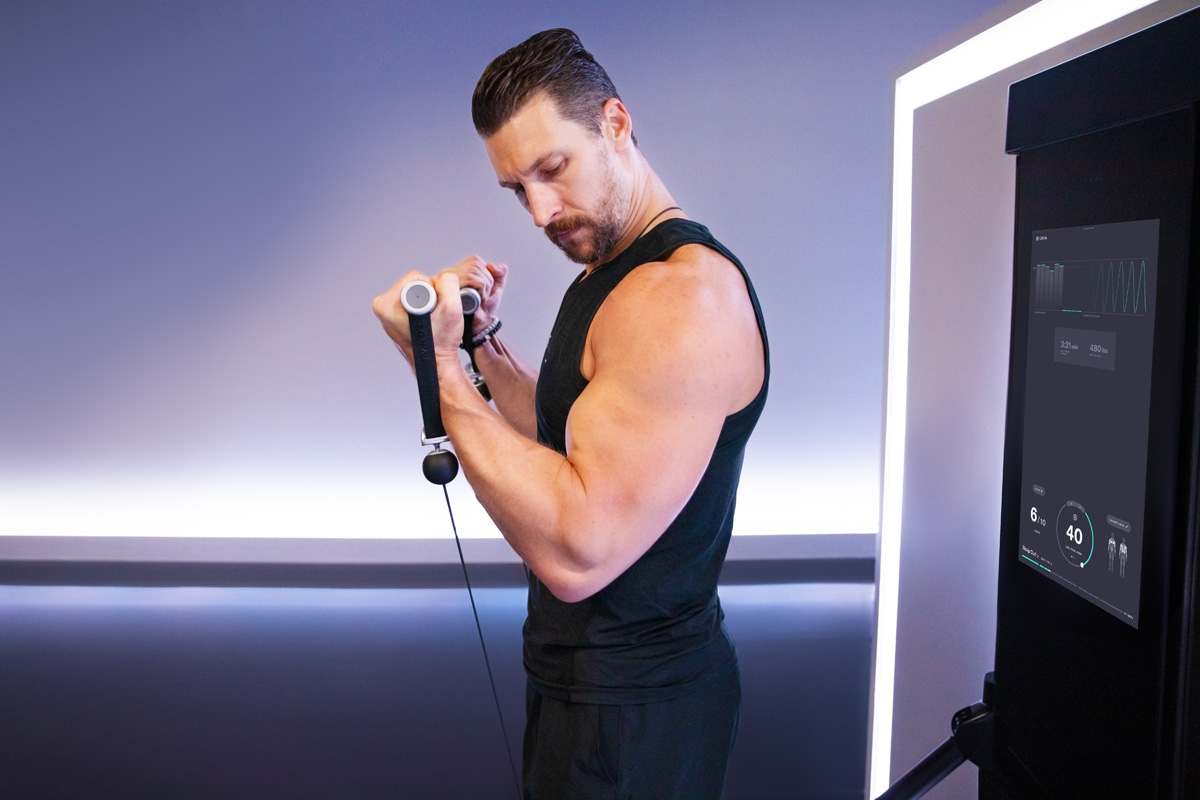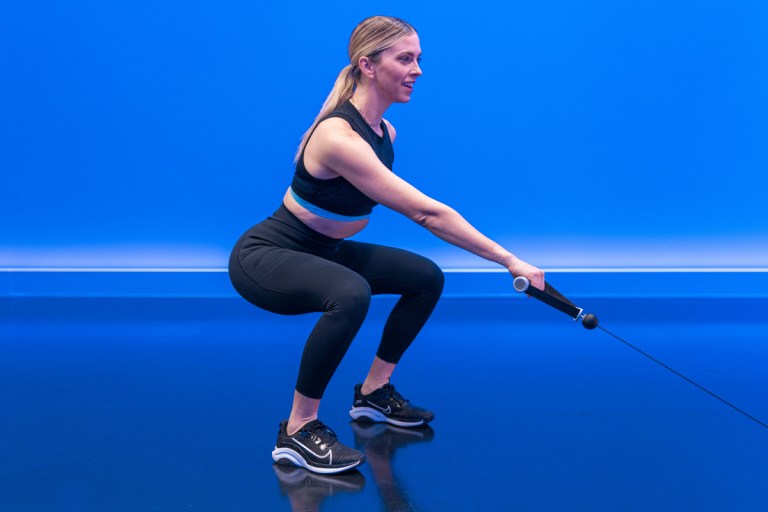What Is Pre-Exhaustion Training and Is It Right For You?
Add variety to your routine and break through plateaus with this advanced lifting technique.

Originated by bodybuilders, pre-exhaustion training is an advanced lifting style that’s gaining popularity among recreational athletes. But does it deserve a place in your fitness routine? Here’s what you need to know.
Strength training beginners can make impressive gains quickly simply because their muscles are not used to the new stress of lifting and are forced to adapt and grow. After years and years of lifting, though, you might realize the gains aren’t coming so easily. That’s where advanced techniques, such as pre-exhaustion training, come in to help experienced lifters break through plateaus.
What Is Pre-Exhaustion Training?
In a typical strength training workout, you’ll likely begin with compound (or multi-joint, multi-muscle) lifts while your muscles are fresh, and then finish with isolation exercises to burn out individual muscle groups. Pre-exhaustion training (also called pre-fatigue training) flips this philosophy on its head. In pre-exhaustion training, you’ll start your workout with an isolation exercise working one muscle group to near-failure, and then follow up with a compound lift that includes that muscle, Tonal coach and certified personal trainer Joe Rodonis explains.
For example, you’ll do a set of chest flys isolating the pecs before a set of bench presses which also hit the pecs along with the triceps and deltoids. “The idea behind this is that if I struggle or fail on a [compound] move it’s not because my chest is tired, it’s because my triceps tire out,” says Troy Taylor, Senior Director of Performance at Tonal. Large muscles, such as the pecs, are more fatigue-resistant than smaller muscles, so by working these bigger muscles near-fatigue first, you’re more likely to actually reach failure in them during your compound lift.

The benefit of nearing failure in these muscle groups is that you reach the point when your body starts recruiting high-threshold motor units, the strongest muscle fibers that are only activated for the most difficult tasks.
“Every time you contract a muscle, it’s going to go from [recruiting] low-threshold motor units to high-threshold motor units, and the high-threshold motor units are the ones that are going toward hypertrophy the most,” says Jacob Rauch, CSCS, PhD candidate, and performance manager of applied training science at Tonal. “Essentially, we want to activate as many high-threshold motor units as we can.” Reaching failure in a muscle group is one way to do that.
What Are the Benefits of Pre-Exhaustion Training?
For experienced athletes who are lifting hundreds of pounds in their compound lifts, Rodonis explains that pre-exhaustion training allows them to get similar gains while lifting a little lighter in compound moves because their muscles are already fatigued. Compared to their typical heavy loads, these lighter lifts are easier on the joints and may have health and safety benefits. On the flip side, Rodonis cautions that for those who are not lifting massive loads, fatiguing your muscles before a compound lift could potentially lead to injury if your form breaks down.
By fatiguing major muscles before compound lifts, you’ll have to do fewer reps of those lifts to stimulate hypertrophy, meaning that this technique may help you save time in your training session. It’s also a way to add variety and engagement to your training if you’re getting bored of your usual workouts.
Is Pre-Exhaustion Training Effective for Hypertrophy?
While the theory behind pre-exhaustion training makes sense, real-world studies have yet to find conclusive evidence that this type of training is much more effective than your standard strength workouts for building muscle.
While research hasn’t shown significantly increased activation in target muscles during pre-exhaustion training, some studies have actually shown increased activation in the synergistic (or supporting) muscles instead (for example, the triceps instead of the pecs in the bench press example above), according to a 2019 literature review.
In terms of volume, another major driver of hypertrophy, the evidence on pre-exhaustion training is also divided. In one study, participants performed more repetitions of movements done earlier in a training session, suggesting that you may be able to get in more volume in your isolation exercise during this type of training, but also that you’d accumulate less total volume in your heavier compound exercise. Interestingly, a 2019 study showed that pre-exhaustion training reduced total workout volume but produced similar strength and hypertrophy results in comparison to traditional resistance training.
“The literature doesn’t show that it’s superior, but it hasn’t shown that it’s detrimental either,” says Rauch. “So if you want to increase variation in your training workout, then this could be something that you implement.”
In other words, if you’re still seeing muscle gains from traditional training methods such as progressive overload in which you gradually add more intensity to your workouts by increasing load or volume, it’s not necessary to add pre-exhaustion sets to your routine. However, if you’ve been strength training for a while, it isn’t always possible to keep adding weight to your lifts. If you’ve reached that point and you’re hitting plateaus, it might be worth trying pre-exhaustion training.
Pre-Exhaustion Training on Tonal
Try pre-exhaustion training for yourself with one of these coach-led workouts that’ll safely guide you through the technique. For more options, you can create a Custom Workout using this training style.
20-in-20: Spiced-Up Sets – Coach Ackeem Emmons

Get a taste of the time-saving nature of pre-exhaustion training in this four-week program full of short but effective workouts. You’ll do pre-fatigue sets for lower- and upper-body exercises, building muscle in less time.
Upper-Body Barbell Supersets – Coach Ash Wilking

In this upper-body workout, you’ll fatigue supporting muscles (the triceps and biceps) before hitting the chest and back in compound moves. This style of training is supported by research that shows increased muscle activation in synergistic muscles during pre-exhaustion training.


